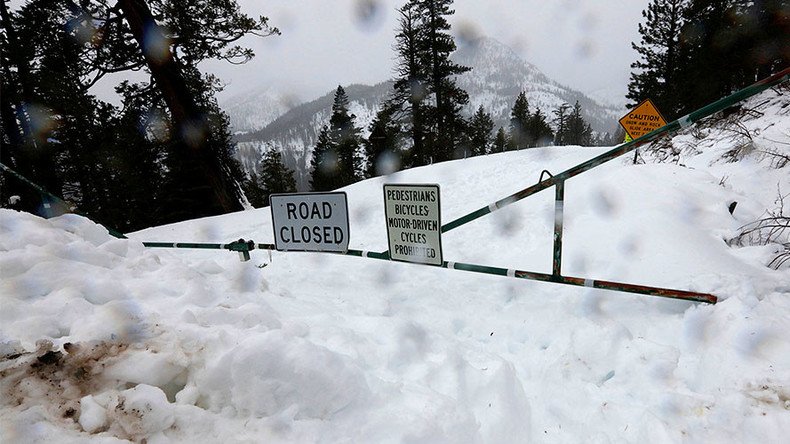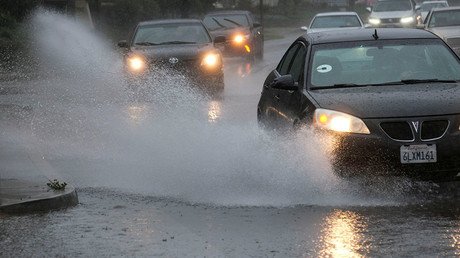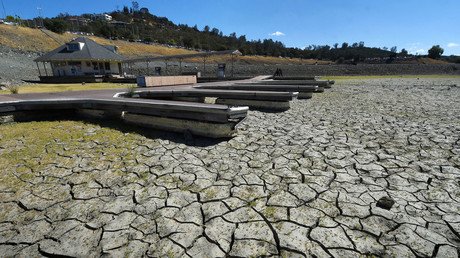End of drought? California snowpack deepest in years

Snowpack levels in the Sierra Nevada are seventh-deepest since 1950, California officials found in a survey. Following a rainy winter, the snow measurement could mean an official end to the state’s five-year drought that has plagued the state.
On Thursday, the California Department of Water Resources carried out its important April 1 snowpack measurements in the Sierra Nevada mountain range, readings of which typically indicate water supply to the rest of the state ahead of the dry season.
“This is an extremely good year from the snowpack standpoint,” said Frank Gehrke, chief of the California Cooperative Snow Surveys Program. He called the April 1 survey “the most comprehensive snapshot of what’s going on for the entire season.”
Measuring the deepest snowpack in years, California officials worry upcoming melt could cause destructive floods https://t.co/XV6t7DgZVqpic.twitter.com/oMrRP3r8pu
— AP West Region (@APWestRegion) March 30, 2017
Readings of 95 sites in the Sierra Nevada showed that snowpack is 164 percent of average (27.9 inches), a snow water equivalent of 45.8 inches, officials said. The snow levels are the largest since 2011, state climatologist Mike Anderson said, according to the Los Angeles Times.
“Although the record pace of the snowpack accumulation fell off significantly in March, California enters the snowmelt season with a large snowpack that will result in high water in many rivers through the spring,” Anderson said in a department release.
What a difference a year (and precipitation) makes! #CAdrought March 2017 & March 2016 via @DroughtCenterhttps://t.co/iH19DqAFWg#cawaterpic.twitter.com/bqs1gb4KVN
— Ed Joyce (@EdJoyce) March 30, 2017
Such a wet winter means flooding will likely occur in some areas when the Sierra snow begins to melt.
“I would say this is one of those really special five exceptional years where every reservoir is full, every watershed is full and when it all comes down the more dire situation is in the Central and southern Sierra Nevada,” said David Rizzardo, head of snow survey and water supply forecasting for the state Department of Water Resources.
With snow levels at such heights and an above-average winter rainfall, there is talk of whether California Governor Jerry Brown will declare the state’s drought is over.
“We’ve heard there’s going to be more on that next week, in terms of what direction that exactly is going to go,” the Times quoted Gehrke as saying.
Two years ago, after the same annual snowpack survey showed dismal levels across the Sierras, Brown announced a state of emergency and revealed the state’s first mandatory water restrictions amid years of drought. At Phillips Station, the same spot where Brown spoke in 2015, the latest survey recorded 94 inches of snow – 183 percent of long-term average, according to the Sacramento Bee.
Brown’s emergency drought orders have required water providers throughout the state to conserve resources. There are guarantees, however, that the governor will call an end to the drought, given the long-term effects of dry conditions.
“Groundwater – the source of at least a third of the supplies Californians use – will take much more than even an historically wet water year to be replenished in many areas,” the state's Department of Water Resources said Thursday.
California will reevaluate its local water restrictions in May, at a meeting of the state Water Resources Control Board, the Times reported.















